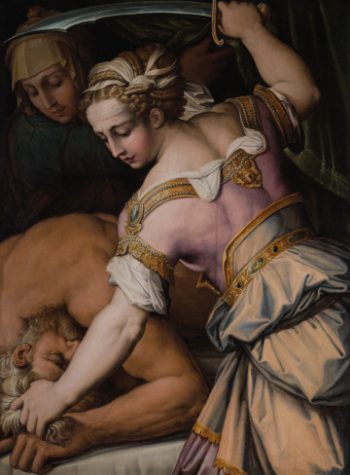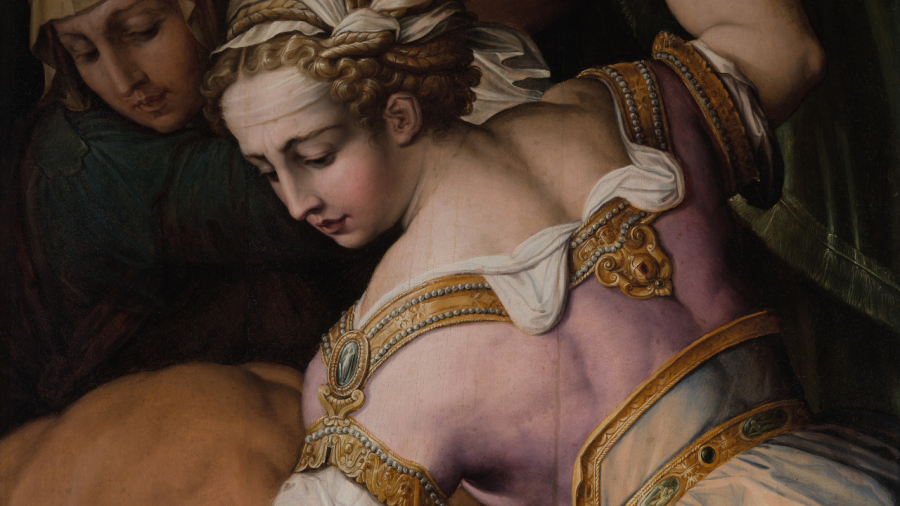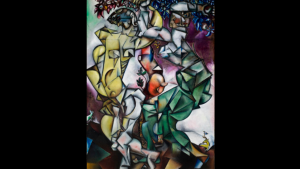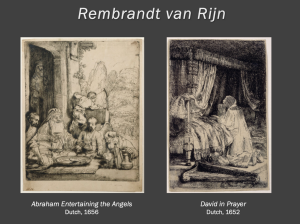Jewish art inside the St. Louis Art Museum: ‘Judith and Holofernes’
Published July 9, 2021
The St. Louis Art Museum attracts art lovers from around the country. But, did you know that this treasure located at the top of Art Hill in Forest Park houses a truly impressive collection of Jewish art in many forms. Jewish Art Inside the St. Louis Art Museum is a collaboration between the Jewish Light and Dale Sharon, a 25 year docent at the St. Louis Art Museum, a SLAM Board of Trustees member and an exhibited artist. Dale simply loves art, and through her passion, we hope to learn more about the amazing Jewish connection at the St. Louis Art Museum.
What is Jewish Art
Like any definition of art, the possible answers to this question are infinite, but for our purposes here in focusing on the SLAM collection, we are focusing on:
- Jewish artists.
- Jewish ceremonial art, also known as Judaica.
- Art in which the subject matter is the Hebrew Scriptures.
- Art depicting Jewish subjects.
- Judaism found in history.
- Jewish donors to the museum’s collection.
 The Story Of Judith and Holofernes
The Story Of Judith and Holofernes
Judith, is the beautiful widow from the town of Bethulia (likely present-day northern West Bank), and the hero of the story when General Holofernes and the Assyrian army laid siege to her city for 34 days. Judith charmed the Holofernes, seduced him and once he was drunk she beheaded him with the help of her maid, Abra. Judith was a shrewd strategist who, knowing that her beauty could be an effective tool to charm her opponent, outsmarted the Assyrian general and saved her people.
To add insult to injury, Judith put his severed head on a spike and left it there to show the opposing army as they fled.
Giorgio Vasari was both a celebrated writer and a renowned painter and architect. His most famous publication, The Lives of the Most Excellent Painters, Sculptors, and Architects, chronicled the great talents of the Italian Renaissance and championed the Florentine emphasis on drawing the body as a means of mastering three-dimensional form.
Vasari depicted the heroine from behind. This perspective allowed him to paint the musculature of Judith’s back and arm, and to employ dramatic foreshortening for the body of the sleeping general. Vasari used a pose copied from Michelangelo’s Sistine Chapel ceiling, portraying Judith as a physically powerful woman, a visible indication of her inner courage.
In this scene, Judith is unmistakably depicted as a powerful woman. The glossy fabric, along with the jewels and adornments of her dress, give Judith a sense of elegance and refinement in addition to power. Over time many different artists have portrayed Judith in a range of ways. We see some overtly triumphant Judiths, as in Varsari’s painting here, but we also see Judith depicted as she escapes from the enemy camp, not really masculinized or aggressive, as in the later painting, Judith Displaying the Head of Holofernes (below) by Luca Giordano, also in the Museum’s collection.
Last month Dale Sharon began hosting a four-part series for the Mirowitz Center on Zoom that will look at Jewish Touchpoints at the St. Louis Art Museum. The zoom sessions will occur on four Mondays at 10 a.m. The series will continue on July 19, Aug. 23 and Sept. 20.
Over the course of this series, which will be offered monthly through September, participants will “brush up” on Judaica, on Jewish artists and on Biblical stories, all in the context of works from the permanent collection of the St. Louis Art Museum. The series will also “fill in the picture” with a look at Jewish donors, Jewish subjects and Jewish history, as they link to and connect with the art at SLAM. Each work that will be spotlighted is, in some way, an expression of Jewish experience, history or culture.
Register online, call 314-733-9813 or email [email protected].
Learn more about the St. Louis Art Museum.


















